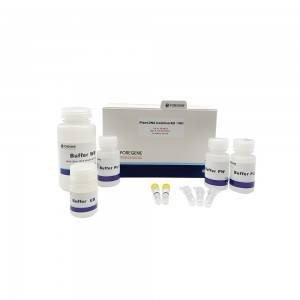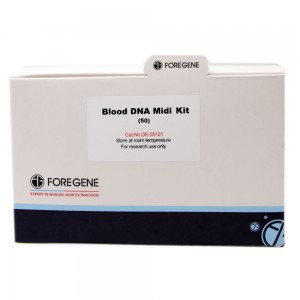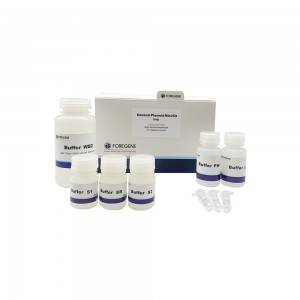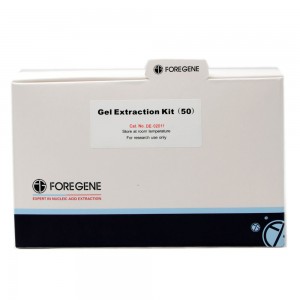Plant DNA Isolation Kit Genomic Plant DNA Purification Kits Reagents Protocol
Specifications
50 Preps, 100 Preps, 250 Preps
This kit uses a DNA-only column that can specifically bind DNA, Foregene protease and a unique buffer system, which greatly simplifies the purification of plant genomic DNA. High-quality genomic DNA can be can be obtained within 30 minutes, which avoid the degradation of genomic DNA.
The DNA-only silica gel membrane used in the spin column is Foregene's unique new material, which can effectively and specifically bind to DNA, and maximize the removal of RNA, impurity proteins, ions, polysaccharides, polyphenols and other organic compounds.
Product components
|
Buffer PL1, Buffer PL2 |
|
Buffer PW, Buffer WB, Buffer EB |
|
Foregene Protease |
|
DNA-Only Column |
|
Instructions |
Features&advantages
■ No RNase contamination: The DNA-Only Column provided by the kit makes it possible to remove RNA from genomic DNA without additional RNase during the experiment, preventing the laboratory from being contaminated by exogenous RNase.
■ Fast speed: Foregene Protease has higher activity than similar proteases and digests tissue samples faster.
■ Simple: the genomic DNA extraction operation can be completed in 30 minutes.
■ Convenient: The centrifugation is performed at room temperature, no 4℃ low-temperature centrifugation or ethanol precipitation of DNA is required.
■ Safety: no organic reagent is required.
■ High quality: The purified genomic DNA has large fragments, no RNA, no RNase, and extremely low ion content,can meet the requirements of various experiments.
Kit application
Suitable for extraction and purification of genomic DNA from fresh or frozen plant tissues.
Work flow
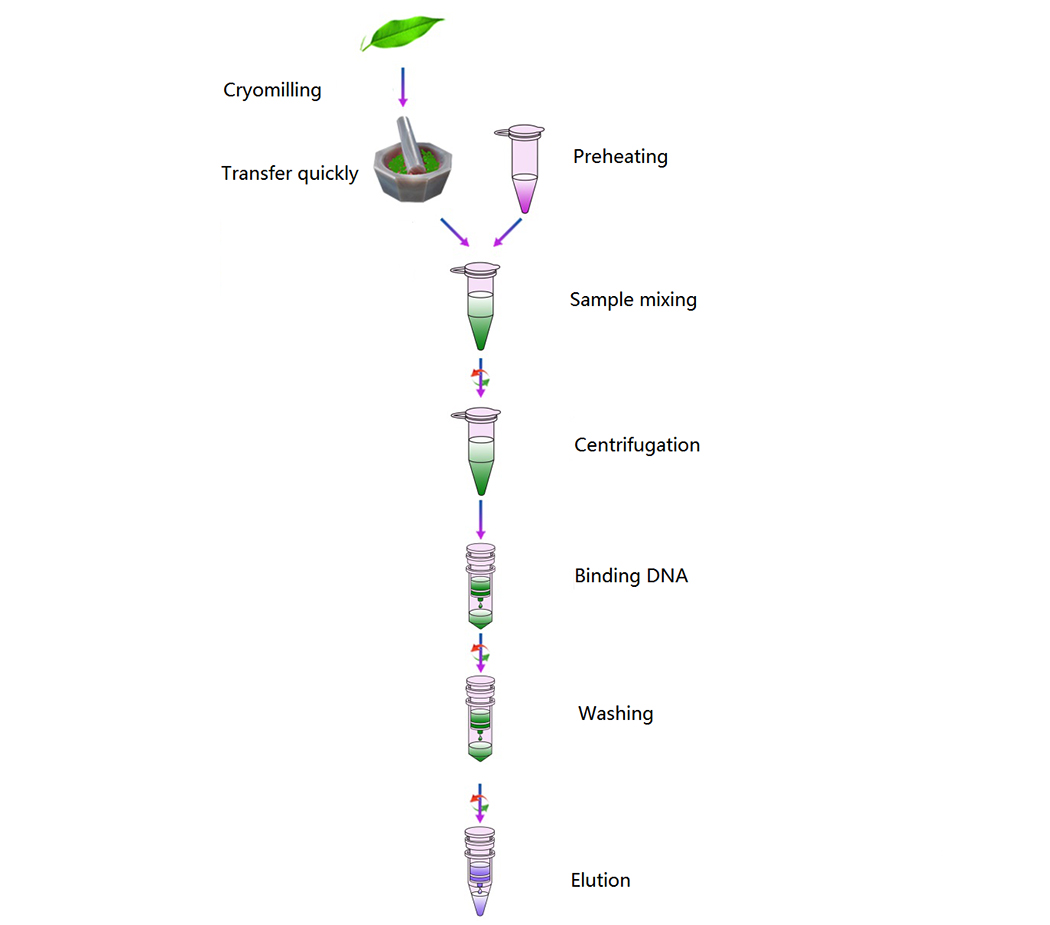
Diagram
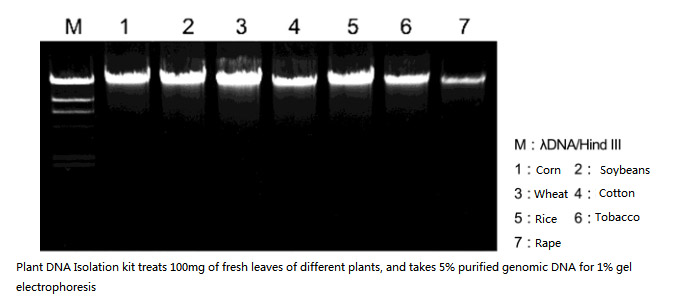
Storage and Shelf life
The kit can be stored for 12 months at room temperature (15–25 ℃) and 2–8℃ for longer time.
Foregene Protease Plus solution has a unique formula, which is active when stored at room temperature for a long time (3 months); its activity and stability will be better when stored at 4℃, so it is recommended to store it at 4℃, remember not to store at -20℃.
Problem Analysis Guide
The following is an analysis of the problems that may be encountered in the extraction of plant genomic DNA, hoping to be helpful to your experiments. In addition, for other experimental or technical problems other than operation instructions and problem analysis, we have dedicated technical support to help you. If you have any needs, please contact us: 028-83360257 or E-mali: Tech@foregene.com.
Low yield or no DNA
There are usually many factors that affect the yield of genomic DNA, including the source of the sample, the age of the sample, the storage conditions of the sample, and the operation.
Genomic DNA could not be obtained during extraction
1. The tissue samples are improperly stored or stored for too long, resulting in the degradation of the genomic DNA.
Recommendation: Store tissue samples in liquid nitrogen or -20°C; try to use newly collected samples for genomic DNA extraction.
2. Too little sample amount may cause the corresponding genomic DNA not to be extracted.
Suggestion: For tissue samples that have been stored for a long time or have severe genomic DNA degradation, the amount of tissue samples can be appropriately increased in order to extract considerable genomic DNA. The amount of the sample can be determined according to the DNA needs, but the fresh sample should not exceed 100mg, and the dry sample should not exceed 30mg.
3. The sample is not ground with liquid nitrogen or placed for too long after liquid nitrogen.
Suggestion: During DNA extraction, the sample needs to be fully ground with liquid nitrogen to break the cell wall; after grinding, please transfer the sample powder to PL1 preheated at 65°C as soon as possible (once the ground powder is melted, the genomic DNA will begin to degrade rapidly) .
4. Improper storage of Foregene Protease results in reduced or inactivated activity.
Recommendation: Confirm the storage conditions of Foregene Protease or replace it with a new Foregene Protease for enzymatic hydrolysis.
5. The kit is improperly stored or stored for too long, causing some components in the kit to fail.
Recommendation: Purchase a new plant genomic DNA extraction kit for related operations.
6. Improper use of the kit.
Suggestion: Purchase a Plant DNA Isolation Kit dedicated to samples for extraction and purification of plant genomic DNA.
7. Buffer WB without adding anhydrous ethanol.
Recommendation: Make sure to add the correct volume of absolute ethanol to Buffer WB.
8. The eluent was not dripped onto the silica membrane correctly.
Suggestion: Add the pre-heated eluent at 65℃ dropwise to the middle of the silica gel membrane, and leave it at room temperature for 5 minutes to increase the elution efficiency.
Extraction to obtain low-yield genomic DNA
1. The sample is improperly stored or stored for too long, resulting in the degradation of genomic DNA.
Recommendation: Store tissue samples at -20℃; try to use newly collected tissue samples for genomic DNA extraction.
2. If the amount of tissue samples is too small, the extracted genomic DNA will be less.
Suggestion: Some plant samples are rich in water, such as aquatic plants such as algae, etc., the dosage can be appropriately increased or the water can be dehydrated a little before the operation.
3. The samples were not thoroughly ground with liquid nitrogen or were left at room temperature for too long after grinding.
Suggestion: The liquid nitrogen grinding must be sufficient, and the sample cell wall should be broken as much as possible; immediately after the grinding, the sample powder should be transferred to 65℃ preheated Buffer PL1 for the next step.
4. Not using the correct kit.
Recommendation: Use a dedicated Plant DNA Isolation Kit to extract and purify plant genomic DNA.
5. Improper storage of Foregene Protease results in reduced or inactivated activity.
Recommendation: Confirm the storage conditions of Foregene Protease or replace it with a new Foregene Protease for enzymatic hydrolysis.
6. Eluent problem
Recommendation: Please use Buffer EB for elution; if using ddH2O or other eluents, make sure the pH of the eluent is between 7.0-8.5.
7. The eluent is not dripped correctly
Suggestion: Please add the elution drop to the middle of the silica membrane and leave it at room temperature for 5 minutes to increase the elution efficiency.
8. The eluent volume is too small
Suggestion: Please use the eluent for genomic DNA elution according to the instructions, at least not less than 100μl.
Extracted genomic DNA with low purity
The low purity of genomic DNA will lead to the failure or poor effect of downstream experiments, such as: the enzyme cannot be cut, and the target gene fragment cannot be obtained by PCR.
1. Miscellaneous protein contamination, RNA contamination.
Analysis: Buffer PW was not used to wash the column; Buffer PW was not used to wash the column at the correct centrifugation speed.
Suggestion: try to ensure that there is no precipitation in the supernatant when the supernatant is passed through the column; be sure to wash the purification column with Buffer PW according to the instructions, and this step cannot be omitted.
2. Impurity ion pollution.
Analysis: The Buffer WB wash column was omitted or only washed once, resulting in residual ionic contamination.
Recommendation: Be sure to wash twice with Buffer WB according to the instructions to remove residual ions as much as possible.
3. RNase contamination.
Analysis: Exogenous RNase is added to the Buffer; incorrect washing operation in Buffer PW will result in residual RNase and affect downstream RNA experimental operations, such as in vitro transcription.
Suggestion: Foregene series nucleic acid extraction kits can remove RNA without additional RNase, and all reagents in Plant DNA Isolation Kit do not need RNase; be sure to wash the purification column with Buffer PW according to the instructions, and this step cannot be omitted.
4. Ethanol residues.
Analysis: After washing the purification column with Buffer WB, no empty tube centrifugation was performed.
Recommendation: Follow the instructions for proper empty tube centrifugation.
Instruction Manual:
Plant DNA Isolation Kit Instruction Manual






